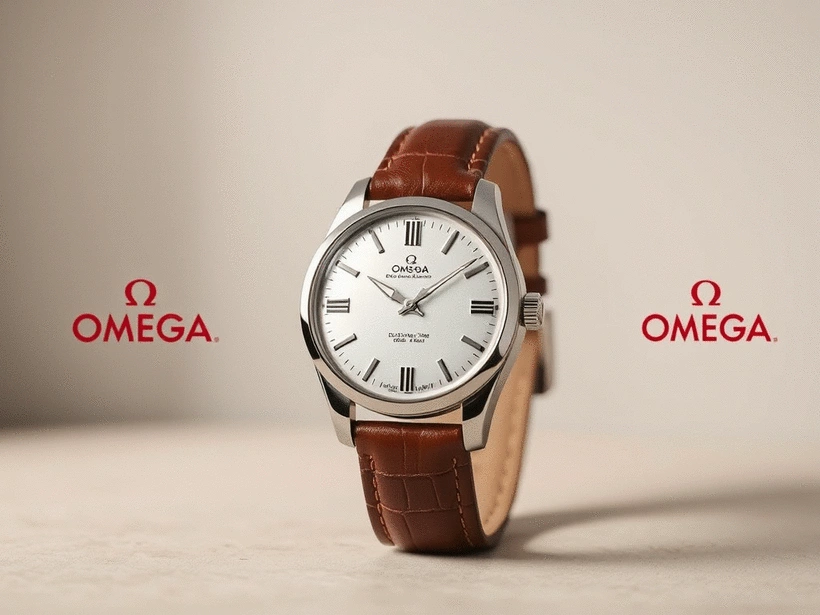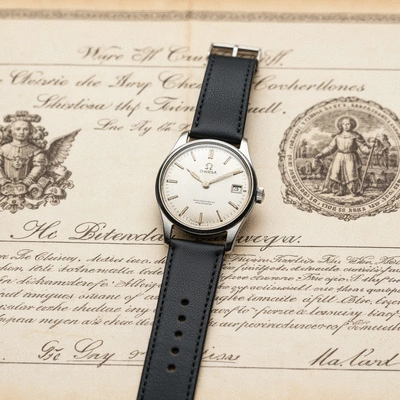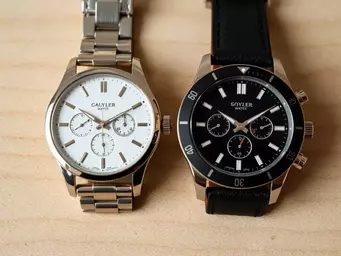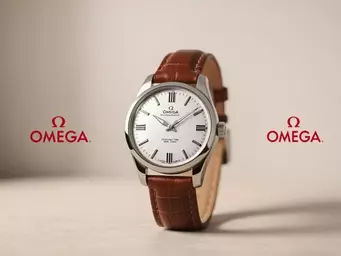Omega Watches: Innovations and Icons

As Omega continues to define excellence in horology, their journey is not just a timeline of events but a testament to innovation, craftsmanship, and heritage. Let's delve into the key lessons that can inspire both seasoned collectors and newcomers alike.
What You Will Learn
- Omega was founded in 1848, starting as a humble workshop that grew into a symbol of luxury and precision.
- The brand's name was adopted in 1894, representing a commitment to excellence that has endured for over a century.
- Key innovations include the first wristwatch with a chronograph function and the Co-Axial escapement, which enhances accuracy.
- Omega has set the standard in the watch industry through collaborations, military designs, and sustainability efforts.
- Iconic models like the Speedmaster and Constellation are not just timepieces; they embody a rich history and craftsmanship.
- Investing in Omega watches can yield significant returns, especially with limited editions and vintage models.
Omega's Enduring Legacy: Key Milestones and Innovations
A visual timeline of Omega's journey from its origins to its groundbreaking innovations and role in watchmaking.
1848 - 1894
The Origins: Foundation & Naming
Louis Brandt establishes workshop in 1848; adopts "Omega" name in 1894 symbolizing excellence.
- 1848: Louis Brandt founded
- 1894: "Omega" name adopted
1917 - 1932
Groundbreaking Achievements
Omega pioneers military watches, enhances durability with Marine, and becomes Olympic timekeeper.
- 1917: First military watch
- 1931: Marine watch introduced
- 1932: Olympic Games timekeeper
1947 - 1965
Space & Precision Era
Launch of Constellation series known for precision and Speedmaster for NASA space missions.
- 1947: Constellation series
- 1965: Speedmaster in space
1999 & Beyond
Co-Axial & Industry Influence
Introduction of the revolutionary Co-Axial escapement and continued industry leadership.
- 1999: Co-Axial escapement
- Sets benchmarks in accuracy
Understanding the Omega Watch Legacy and Its Impact on Horology
The world of horology is rich with history and innovation, and at the forefront of this journey is Omega. This iconic brand has not only set standards in craftsmanship but has also significantly influenced the evolution of wristwatches. I often reflect on how Omega's legacy resonates with both enthusiasts and collectors, and it’s a narrative I love sharing at Wrist Watches for Men. Let's take a closer look at the origins and milestones that have shaped Omega into the renowned name it is today.
The Origins of Omega: A Journey Through Time
Founded in 1848 by Louis Brandt in La Chaux-de-Fonds, Omega began as a small workshop. Over the years, it grew into a powerhouse of watchmaking, renowned for its precision and quality. Did you know that the name "Omega" was selected in 1894 and symbolizes the brand's commitment to excellence? It's fascinating to see how a humble workshop transitioned into a name synonymous with luxury and innovation! To learn more about how Omega maintains its position at the forefront of watchmaking, you can read this interview with Omega CEO Raynald Aeschlimann.
- 1848: Louis Brandt establishes the company in Switzerland.
- 1894: The brand adopts the name "Omega," marking a new era.
- 1932: Omega becomes the official timekeeper for the Olympic Games.
- 1965: The Speedmaster is used in NASA's space missions.
These key moments reveal how Omega laid the groundwork for its enduring reputation. I often tell my readers that every Omega watch has a story, connecting wearers to a lineage of excellence and craftsmanship.

Milestones in Omega's History: Key Developments and Innovations
As Omega evolved, it introduced several groundbreaking innovations that revolutionized the watch industry. One standout achievement is the creation of the first wristwatch with a chronograph function in 1865. This advancement not only showcased Omega's ingenuity but also set the stage for future innovations that would define the brand. For a deeper dive into Omega's continuous pursuit of innovation, explore this article on Omega's art of innovation.
- 1917: Omega produces the first watch specifically designed for military use.
- 1931: The introduction of the Marine watch, enhancing durability.
- 1947: Omega launches the Constellation series, known for its precision.
- 1999: The Co-Axial escapement is introduced, improving accuracy.
Reflecting on these milestones, I see how Omega continuously pushed boundaries, merging tradition with modern technology. Each innovation not only enhances the functionality of their watches but also enriches the heritage that enthusiasts value.
The Role of Omega SA in the Evolution of Swiss Watchmaking
Omega SA has played a pivotal role in shaping the Swiss watchmaking landscape. As part of the Swatch Group, Omega has influenced both luxury and affordable segments while maintaining a commitment to craftsmanship. I often emphasize this in my discussions with readers: Omega isn't just a brand; it’s a standard bearer for quality in the watch industry. To understand more about the brand's strategic research and development, you can refer to this piece on Omega's R&D in the 21st century.
- Omega has set benchmarks in accuracy and reliability.
- The brand influences design trends across the industry.
- Collaborations with renowned watchmakers enhance its prestige.
- Omega's commitment to sustainability sets a modern example.
By understanding Omega's influence, we can appreciate how this brand has not only flourished but also paved the way for upcoming generations of watchmakers. It's truly inspiring to see how Omega combines its rich history with a vision for the future!
Interactive Poll: Your Omega Preference
As we delve deeper into Omega's storied legacy, we want to know: Which Omega watch model resonates with you the most? Share your thoughts below!
Conclusion: The Enduring Appeal of Omega Watches
As we wrap up our exploration of Omega watches, it’s clear that their innovations and iconic models have shaped the landscape of horology. From the legendary Speedmaster, famed for its lunar journey, to the elegant Constellation, Omega has left an indelible mark on watchmaking. Each timepiece not only tells time but also tells a story—of craftsmanship, precision, and a commitment to excellence that resonates with watch enthusiasts like myself.

In reviewing the rich history and remarkable designs, several key elements stand out:
- The revolutionary Co-Axial escapement for enhanced accuracy.
- Iconic models like the Speedmaster, Seamaster, and Constellation.
- A blend of tradition and modernity in the De Ville series.
These factors contribute to Omega's status as a staple in both luxury and collectibility. As you consider your next wristwatch purchase, think of Omega not just as a timepiece, but as a piece of horological history that connects you to a broader narrative.
Encouraging Engagement: Where to Start Your Omega Journey
Are you ready to dive into the world of Omega watches? Whether you’re a seasoned collector or just starting your journey, I encourage you to explore the options available. Here are a few steps to help you embark on your Omega adventure:
- Visit authorized dealers to explore the models firsthand.
- Research online reviews and guides to understand features and pricing.
- Consider attending watch fairs or exhibitions for a more immersive experience.
At Wrist Watches for Men, we're here to guide you through the intricacies of selecting the perfect Omega that matches your personal style. I’d love to hear your thoughts on your favorite Omega model or any experiences you’ve had with these exquisite timepieces!
Frequently Asked Questions About Omega Watches
Here are some common questions about Omega watches:
- When was Omega founded?
- Omega was founded in 1848 by Louis Brandt as a small workshop in La Chaux-de-Fonds, Switzerland.
- What does the name "Omega" signify?
- The name "Omega" was adopted in 1894 and symbolizes the brand's ultimate commitment to excellence and perfection.
- What are some of Omega's key innovations?
- Key innovations include the first wristwatch with a chronograph function (1865), the introduction of the Marine watch (1931) for enhanced durability, and the revolutionary Co-Axial escapement (1999) which significantly improves accuracy.
- Which iconic Omega models are mentioned in the article?
- The article highlights iconic models such as the Speedmaster, famous for its role in NASA space missions, and the Constellation series, known for its precision.
- Is an Omega watch a good investment?
- Yes, investing in Omega watches can be rewarding. Limited editions and vintage models often appreciate in value due to their heritage, demand, and Omega's reputation for quality and craftsmanship.
Frequently Asked Questions About Omega Watches
What Should I Know Before Buying an Omega Watch?
Before making a purchase, it’s crucial to consider your style and needs. Omega offers a variety of models tailored for different occasions and tastes, so think about where and how you'll wear the watch.
- Understand the different collections: Speedmaster, Seamaster, Constellation, and De Ville.
- Research the features that matter to you, like water resistance or chronograph functions.
- Set a budget, but be open to exploring options within and slightly above to find the right fit.
How to Care for and Maintain Your Omega Timepiece?
Caring for your Omega watch is essential to preserving its beauty and functionality. Here are some maintenance tips:
- Regularly clean your watch with a soft cloth to remove dirt and oils.
- Consider professional servicing every 4-5 years, especially for automatic movements.
- Avoid exposing your watch to extreme temperatures, magnetic fields, or chemicals.
By following these steps, you’ll ensure your Omega remains a cherished companion for years to come!
What Makes Omega Watches a Solid Investment for Collectors?
Investing in Omega watches can be a rewarding experience, especially considering their heritage and demand among collectors. Here are a few reasons why:
- Limited editions and vintage models often appreciate in value over time.
- Omega's commitment to quality ensures a lasting and reliable timepiece.
- The brand's storied history adds to the desirability and prestige of owning an Omega.
As you think about your collection, remember that Omega watches are not just about telling time; they are about being part of a legacy that speaks to craftsmanship and innovation. Dive into this exciting world and discover how an Omega watch can elevate your style and investment portfolio!
Recap of Key Points
Here is a quick recap of the important points discussed in the article:
- Omega was founded in 1848 and has a rich history of craftsmanship and innovation.
- Key milestones include becoming the official timekeeper for the Olympic Games in 1932 and the use of the Speedmaster in NASA space missions in 1965.
- Innovations such as the first wristwatch with a chronograph function and the Co-Axial escapement have set Omega apart in the watch industry.
- Omega's influence extends beyond luxury watches to setting industry standards in accuracy and sustainability.
- When purchasing an Omega, consider your style, the different collections available, and the features that matter to you.







